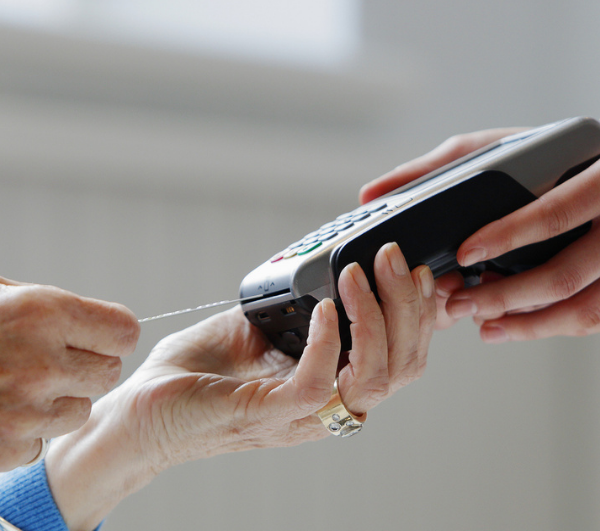Worried about how to increase sales? This article discusses some of the best e-commerce marketing strategies tested and proven to help grow your business manifold.
Marketing has been continuously evolving, and e-commerce has changed the shape and structure of marketing. E-commerce has drastically changed the global business environment by bringing stores and their content to the home of customers, thus eliminating the need for customers to visit stores.
E-commerce in India has grown by over 30% over the last few years, and at present, India is a thriving digital economy with more than 500 million users. Platforms like Amazon, Flipkart, Jio Mart, and many others show e-commerce is here to stay in India. Today’s millennials find e-commerce platforms very easy to use.
Some actionable points in your eCommerce marketing strategy 2022 to increase your sales volume and profitability in your e-commerce store include the following eCommerce marketing tools.
Remember, maximising your social media applications is one of the essential eCommerce marketing tips.
- Upsell your products: When a customer considers buying a particular product in your eCommerce store, you convince the customer to buy a premium product through either superior packaging or better quality. Be aware of how sensitive the customer is to price changes. The customer remembers the price of the original product he contemplated buying, so the new proposed change must be discernibly better and meet the customer’s needs more appropriately. The customer must feel that the pricier product meets his needs more suitably than the previously considered product in the same product group.
- Integrate Instagram: With 500 million daily users, Instagram is one of the most powerful social media apps. It brings influencers, consumers and brands together through pictures. You can run a contest to engage your audience or show pictures of your product development process. Adding products to the Instagram posts provides a link that enables your customers to purchase from your e-commerce stores.
- Reduce the number of carts abandoned at checkouts by customers: There are many reasons why customers abandon their carts at the checkout. Use email recovery campaigns to persuade your customers to return to the e-commerce store. You can add inducements like discounts, free shipping or cashback. Something catchy like “forgot something? Those items are still here waiting for you”. Retarget these customers so that you convert them into paying customers during their second visit.
- Launch a Facebook store: Facebook is one of the essential social media channels for e-commerce marketing. It is the largest social network with 2.90 billion monthly active users globally. Facebook can integrate directly with your account, so you don’t have to keep a separate inventory. Facebook audience insight tools help you delve into your potential customers to collate information about gender, education, location, language and even past purchases. You can set up a Facebook business page and allow customers to contact your store through Facebook Messenger.
- Capture your email subscribers: Emails contribute about 24 per cent of the revenues of the e-commerce store. You can give more personalised messages through email than on social media websites. Your blog or newsletter can be sent to customers through your email. Emails have to be regularly and consistently sent to your customers. When a new customer joins, you can send a welcome email. Promo codes can follow this up, thank you emails etc., to personalise the emails. Wish list reminder emails can be sent to customers who don’t purchase during their last visit to the store.
- Make it easy for customers to navigate your store site: Have clear, easy to read fonts on your store items, show that the customers are getting a clear value proposition and avoid any confusing directions in your store. Customers should find it easy to shop at your store. The design of your store page and the segmentation of products on your page should be clear and straightforward.
- Use live chat tools on your page: You can use live pages to interact with your customers when they visit your store. You can have direct conversations with your customers and address their concerns immediately when they visit your store. This improves their shopping experience. WhatsApp and WeChat are equipped to handle commerce and payments within the apps. Artificial Intelligence can be used to deliver better and faster responses to customers.
- Content marketing campaigns: Content marketing is a strategy to attract and retain your audience by creating product and store related articles, videos, podcasts and other media. Coke’s “share a bottle” allowed everyone to personalise their favourite drink. This is a classic e-commerce marketing strategy example. You can also use influencers’ recommendations and content to drive traffic to your eCommerce store webpage.
- Personalisation: Based on their past purchase experience, preferences and actions, you can personalise your customer experiences when visiting your eCommerce store. According to a McKinsey and Company report, the world’s leading producer for marketing insights, the personalisation tactic can help to boost the sales and ROI of the E-commerce store.
- Leverage User-generated content: When people see their peers’ purchasing patterns, they will try to emulate them. This sometimes outweighs the demand from customers who have brand loyalty. Customers occasionally even post their pictures and create a product following. According to a Qualtrics survey, it is estimated that 90%-95% of online customers read online reviews by peers before making a purchasing decision. This creates increased customer trust, establishes a direct line to the customer, and your store also appears higher in search engine rankings.
- Think Local: Online stores can think like brick and mortar stores in a retail locality. Identify the local concentration of your customers and run promotion campaigns. Local or seasonal campaigns can help to drive up sales. You can consider expedited or free shipping to customers from warehouses in the area.
- Optimising your product pages: Conversion rate optimisation helps to maximise the online conversions of customers into paying customers. Both quantitative and qualitative research can be carried out to study the conversion of potential customers to paying customers.
- Optimise your mobile pages: The mobile phone is an essential tool for brands to interact with their customers. Mobiles are ideal for marketing to customers in India’s Tier II and Tier III cities. Most retailers in India expect 90% of their sales to come through smartphones in the next few years.
- Reward loyal customers: Start a customer loyalty point program. This will induce customers to buy from your store. This will generate brand loyalty to your store and give them extra incentive to make purchases from your store. The customer loyalty points may be converted into gifts, shopping, or increased product discounts.
- SEO has driven marketing and Pay per Click Advertising: This measures your website with Google algorithms and ranks your website higher in Google searches. Pay per click advertising is when a customer clicks your page; you will only pay for the advertisement. Both help with increasing traffic to your website through keyword search.
- Wearable and Virtual Reality tours: Virtual reality product campaigns will enable the customer to see product demonstrations and experience the product virtually. This will entice them to buy the products in your e-commerce stores. Do virtual reality advertisements for your quality products. This could be an expensive proposition, so you must do a cost-benefit trade-off before committing yourself.
- Use different e-commerce platforms: Customers may prefer to visit popular, generic e-commerce platforms like Amazon and Flipkart, so make sure your products are featured on them in addition to your e-commerce store. Increase festival season discounts and offers to induce seasonal buying, especially in products like consumer durables, apparel etc.
Conclusion
Your social media campaigns play a crucial role in eCommerce marketing strategies and make your e-commerce store a success. Using the above tactics, you can increase the footfall and improve your sales. Your store will soon have a competitive edge with the mix of the right technology, design, and e-commerce marketing strategies. Add a payment platform like PayU to integrate with your eCommerce platform seamlessly.
PayU is a secure online payment solution provider that can provide a seamless checkout customer experience. PayU is one of the most secure systems available. It is PCI-DSS compliant (Payment Card Industry Service Data compliant). It also has 128-bit SSL (Secure Sockets Layer Encryption), which reduces the possibility of phishing attacks. All your customers’ credit card information is stored on secure computers. Any refunds initiated by your eCommerce store are also processed quickly. PayU is a Netherlands based service provider to online merchants.
If you want help accessing the proper technology and obtaining an on-demand settlement of customer payments for your eCommerce store, click here.
FAQs
The e-commerce industry is valued at $ 22 billion, which is expected to increase to $ 200 billion by the year 2027.
Using social media is key in today’s marketing world. Following are the key social media platforms where you should have a presence for digitally marketing your products like
Facebook, Instagram, Twitter, YouTube, WhatsApp, LinkedIn, Pinterest, Snapchat and Reddit
All the above ways for e-commerce marketing are best. You can use the best one that suits your products as well as fits in your marketing budget.
Social media marketing is affordable. You can start with your social media page for free on any of the social media platforms. To increase your reach, you might have to pay, but again, you are provided with options as to how much you want to invest in marketing.




